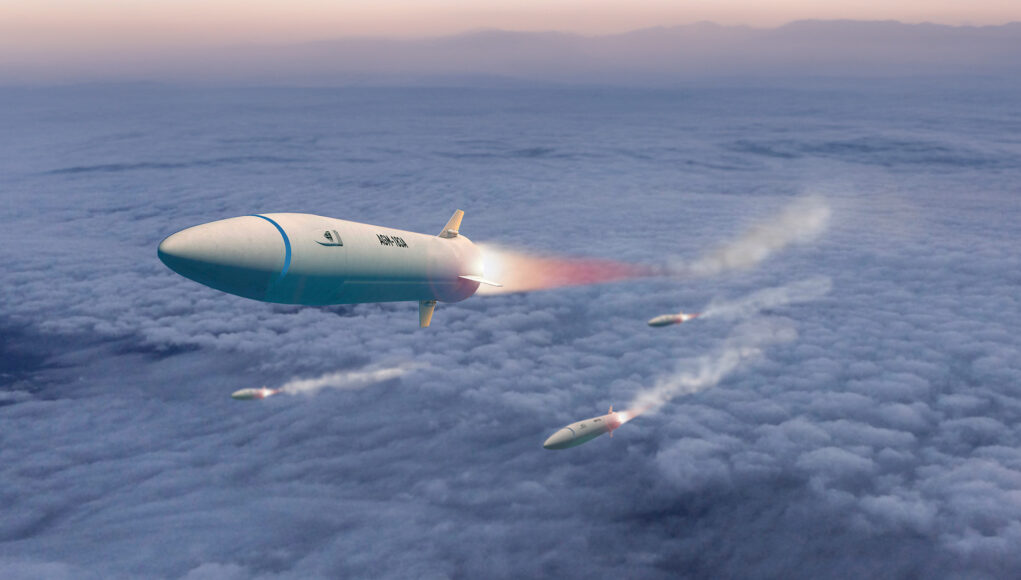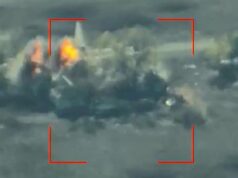In a joint statement released on 26th September 2024, following a trilateral meeting at the Old Royal Naval College in London, the UK, US, and Australia reaffirmed their strategic commitment to the AUKUS partnership, emphasising their collective efforts to advance cutting-edge military technologies, particularly in the field of hypersonic weaponry. The defence ministers of the three nations discussed progress in developing advanced capabilities under Pillar II of the AUKUS agreement, focusing on long-range precision strike technologies to address global security challenges.
The joint statement revealed that all three nations are accelerating their efforts to develop offensive and defensive hypersonic capabilities, marking a significant step forward in the AUKUS agenda. These hypersonic systems are designed to hold “time-critical and heavily defended targets at risk from increased ranges,” a critical capability in modern warfare. The development of hypersonic technology is expected to dramatically enhance the ability of AUKUS forces to strike targets at unprecedented speeds while increasing the survivability of their assets.
The trilateral collaboration involves a robust series of tests and experiments to co-develop hypersonic technologies, with a particular focus on delivering real-world effects such as strike, intelligence, surveillance, and reconnaissance. The statement noted that “trilateral tests and experiments will accelerate the development of hypersonic concepts and critical enabling technologies,” ensuring that AUKUS nations remain at the forefront of this game-changing military technology.
In addition to hypersonics, the AUKUS partners are also exploring opportunities to scale up their combined efforts in undersea warfare, including the integration of uncrewed underwater systems launched from submarines. This collaboration aims to expand the operational reach of these systems, enhancing the ability of the UK, US, and Australia to conduct long-range precision strikes and gather crucial intelligence in contested maritime environments.
The statement highlighted the strategic importance of these advancements for AUKUS nations, noting that “our trilateral science and technology, acquisition and sustainment, and operational communities are working across the full spectrum of capability development—generating requirements, co-developing new systems, deepening industrial base collaboration, and bolstering our innovation ecosystems.” The aim is to ensure that the three nations are fully prepared to face emerging threats in a rapidly changing global security landscape.
As part of the hypersonic technology programme, the AUKUS partners are pooling their industrial and scientific expertise to create a robust joint force that can deliver advanced capabilities across multiple domains. The development of hypersonic weapons is a crucial component of the broader AUKUS strategy, with the statement noting that “these capabilities will hold time critical and heavily defended targets at risk from increased ranges, enhancing the survivability of our forces and defending our homelands and forces against potential threats.”
The AUKUS partnership has taken significant strides towards delivering a new generation of advanced military technologies, with hypersonic weaponry at the forefront of these efforts. The joint focus on hypersonics under Pillar II of AUKUS reflects the commitment of the UK, US, and Australia to maintain their technological edge and ensure the security of their respective nations and the broader Indo-Pacific region in the decades to come.













Good. What worries me is not the excelent work devoted to this expensive high quality kit but the cheap and cheerful kit we need to buy from pile it high sell it cheap suppliers.
The Russians for example build junk in ridiculous quantity cheaply and without worrying if they all work. AUKUS should spend time building cheap reliable drones or whatever capable
of disrupting whatever any enemy throws at us and in whatever numbers.
You don’t need AUKUS to do that. Any country can do this.
The entire point of AUKUS pillar II is to focus on gimmicks like Hypersonic’s, photon torpedos and AI.
This keeps US defence contractors away from anything useful like cheap drones or our aviation sector.
Tempest has a very pronounced mandate to use 100% non ITAR related components so it shows just how seriously we are taking collaboration with the US on our single biggest project.
Just remember Tempest is a pre AUKUS project and effectively a completely different partnership and on a different plain of technical and legal complications. To most US / partner projects ITAR is the killer to meaningful cooperation, but due to the plain that AUKUS is on, ITAR is being relaxed otherwise it’s unworkable.
Just watch and wait, I bet you will see Japan join AUKUS but everyone else excluded, including Canada.
Perhaps however I don’t think any one can truly trust Congress in the long run. No one wants either German or the US any where near a product you might want to export.
AUKUS is fine for hypersonics and SSN’s but not for anything with export potential.
Let us hope that the AUKUS partners can collectively address the ChiCom tech lead in many AUKUS Pillar 2 initiatives. 🤞 Some do not realize the implications of potential continuing ChiCom dominance in areas such as hypersonics and quantum computing.
…Pillar 2 initiative areas. 🙄
Can’t really understand the gist of these comments despite reading them twice. Not sure how paragraph 1 ensures your conclusion in paragraph 2.
As for calling hypersonics and Ai ‘gimmicks’ nothing could be further from the truth. Similar statements were made about it being pointless trying to compete against Boeing in airliners or build rockets as they were too expensive, the former has proved laughable now while the latter are being built by Countries everywhere and costs reducing all the time. Speed is a great asset to have even if it’s in the foreseeable battlefield at least a relatively niche weapon as building rockets once was, but everything is niche till it becomes universal just the timescale is in question but you never get to the latter if you simply reject technology due the former. As for Ai it’s here now in our lives, indeed it’s going to dominate our lives within a decade and AGI is very close to realisation by all accounts, something that was, even by most experts in the field thought to be around 40 years away a mere 5 years ago. To call Ai a gimmick in any field is like saying Model T Ford was a gimmick a century ago and it would be very naive to ignore its implications. One thing is for sure as Ai will increasingly feature in most if not all military drones very soon to claim it’s a gimmick to stop US companies getting involved with cheap drones or aviation when it will become intrinsic to both, makes no sense at all to me.
😂 Probably for the best. F35 was a project of limited success for the UK. Tempest should be a project where we regain our freedom and conspire with willing partners to produce an outstanding product. Let’s hope we do just that.
Hyper, duper super expensive that will take ages to field and ages to capability insert into F-35 Tempest ?
Not necessarily, LM could supply one very quickly if a commitment to it was made. Hypersonic missiles will be very common I suspect by the time Tempest enters operations, their level of sophistication will be the only real question and that’s where the serious extra cost comes in Starstreak is super fast, the Bae proposal was even faster and that design work was decades ago. I suspect Ai design tools will progressively bring down costs and increase their capabilities, Deep Mind’s sophisticated Ai models are already transforming complex problem solving into viable answers in weeks what would take humans years if at all possible. Material research and fluid dynamics are just two areas set to be transformed and may benefit Hypersonic developments. .
I guess you haven’t heard of the Dark Eagle weapon or how close it is to being declared operational.
Well we are twenty years behind after blowing the budget of flawed stealth.
It will be too expensive since as usual and unreliable.as always